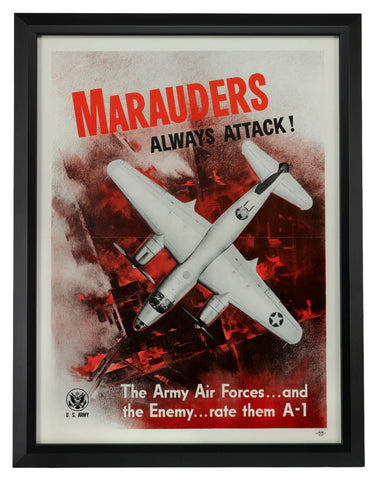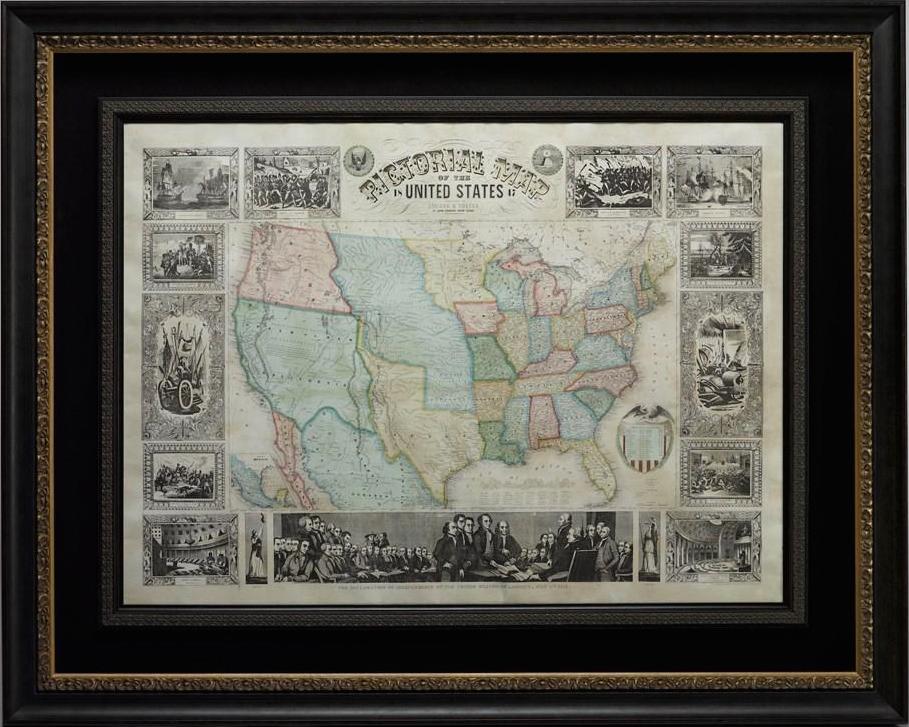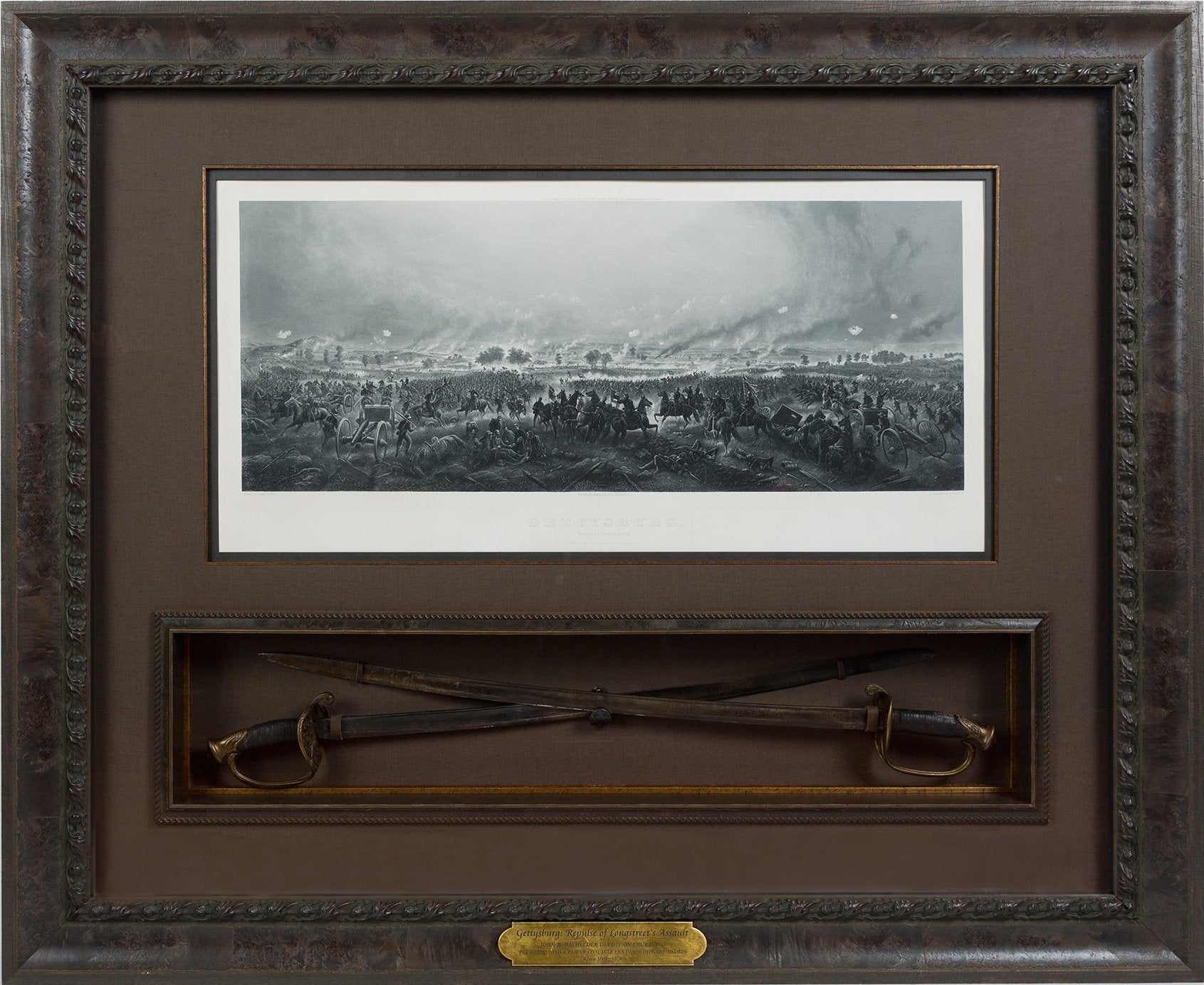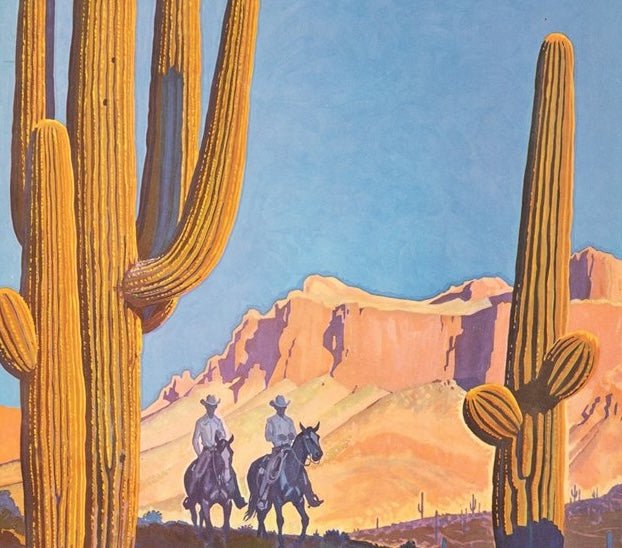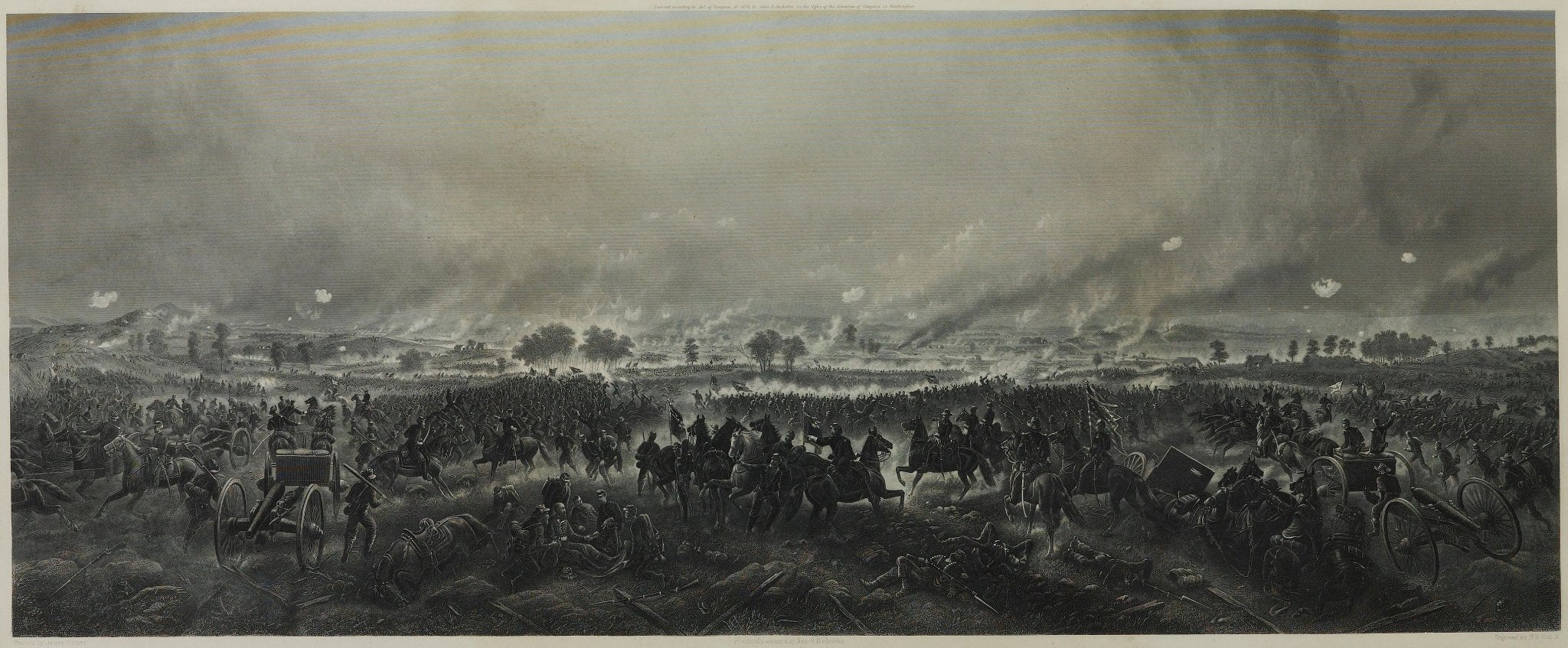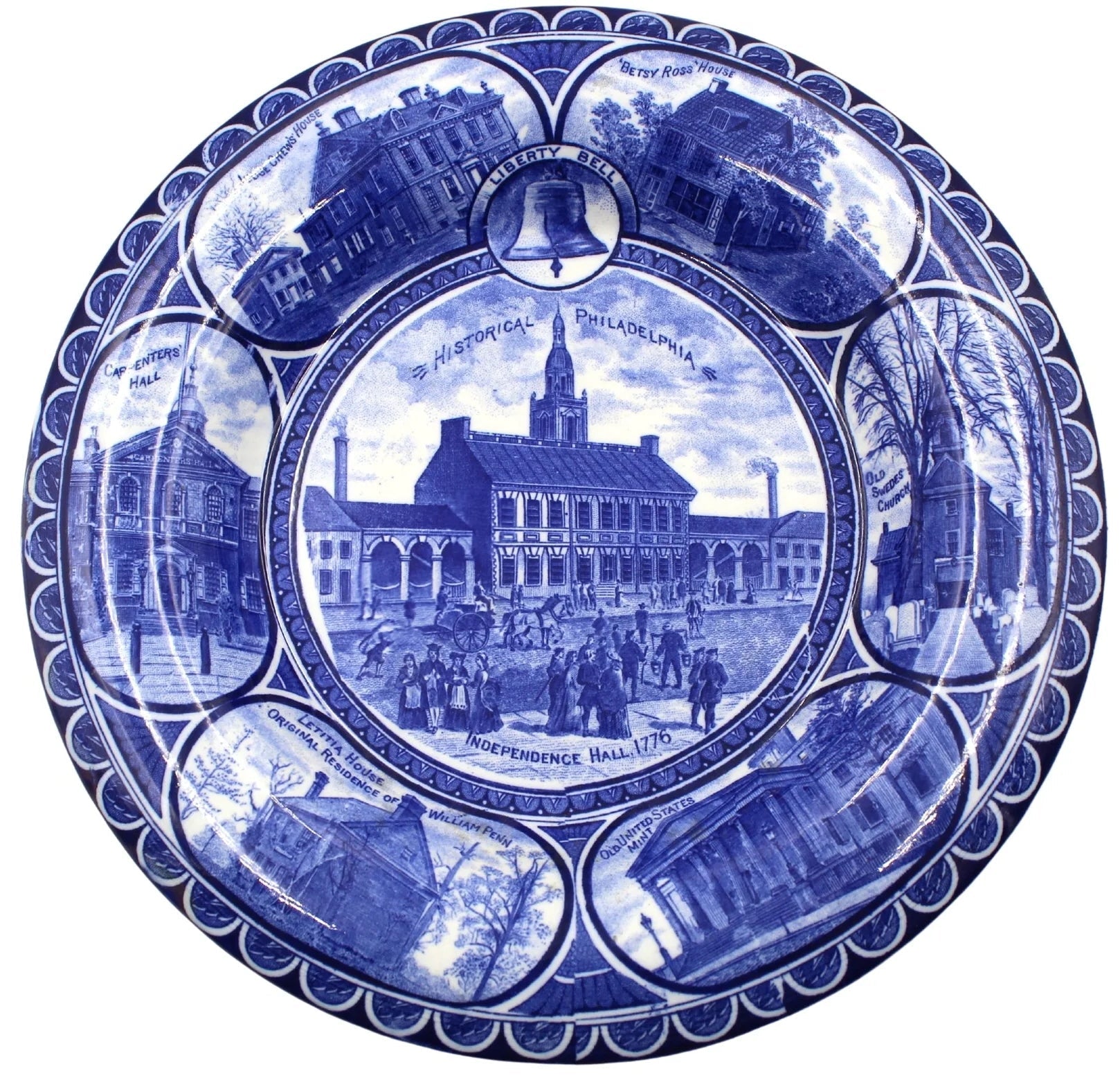Army Air Force Fighter Planes, Used for Recruitment
Originating from the U.S. Army Air Corps, the U.S. Army Air Forces was formed in 1941 in order to assist in early WWII missions. As a newer branch, the U.S. Army Air Forces needed the help of propaganda posters to to boost recruitment numbers and educate the public about what service in the Army Air Forces would entail. Recruitment posters were created and distributed across the country in order to entice young men to enlist as army pilots and continue operations. Many of the recruitment posters featured different types of aircraft that were used in air missions.
This vintage 1944 United States Army Air Force poster features an Army Air Force serviceman looking steadfastly towards the distance, while some of the most impressive aircraft of the time fly amidst the clouds. Advertising an impressive array of air power at the bottom of the poster, including planes such as the B-29 Superfortress, B-17 Flying Fortress, and the B-26 Marauder, showed the might and ingenuity of American industry. Meanwhile, quoting the National Anthem, “O’er the Ramparts We Watch,” at the top of the poster helped appeal to viewer’s sense of civic duty and invoked a sense of patriotism and need to defend liberty.
This 1945 color poster features an American pilot and a ground crew Staff Sergeant shaking hands across an airplane cockpit. Painted on the airplane are nine flags representing nine enemy airplanes the pilot had shot down in his career, alluding to the professional success and respect one could hope to gain while serving in the Army Air Forces. Just below the airplane, the poster reads “AAF The Greatest Team in the World" - emphasizing teamwork as another key selling point to recruits.
Many vintage Army Air Force posters kept impressive aircraft at the forefront of their advertisements. Above, we have a vintage WWII poster featuring a P-39 Airacobra fighter plane. The P-39 Airacobra was a fighter produced by Bell Aircraft for the U.S. Army Air Forces during World War II. It was one of the principal American fighter jets in service when the United States entered combat. Engines in the P-39 aircraft were only equipped with a single-stage, single-speed supercharger, which meant that it was used at lower altitudes. This played to the P-39’s strengths of sturdy construction, reliable radio gear, and adequate firepower to make it suitable for the low-speed, low-altitude nature of most air combat on the Eastern Front.
Also in our collection is this vintage WWII U.S. Army poster of a Martin B-26 Marauder bomber plane, published by the Recruiting Publicity Bureau in 1943. The B-26 Marauder was a twin-engined medium bomber that was designed and built by the Glenn L. Martin Company. The bomber was assembled at plants in Baltimore, Maryland and Omaha, Nebraska and between 1941 and 1945, a total of 5,288 Marauders were built. Although notoriously tricky to maneuver and fly, the B-26 saw extensive service during World War II- in the Pacific Theater in early 1942, in the Italian campaign, and in bombing bridges and rail yards in preparation for the D-Day landings of the Normandy Invasion.
U. S. Army Air Forces recruitment posters showcased the dizzying array of aircrafts flown during the war, emphasized the technological might of American air power, and helped American men feel like they might be the missing piece needed to win the war. The posters advertised that any onlooker could have a hand in securing American safety and protection and help ensure a victory against the enemy. Recruitment posters were a great way to get the word out about how to be involved in the war effort, and helped the Army Air Forces grow from 20,824 servicemen and women enlisted in 1939 to 1,900,805 by 1945.





